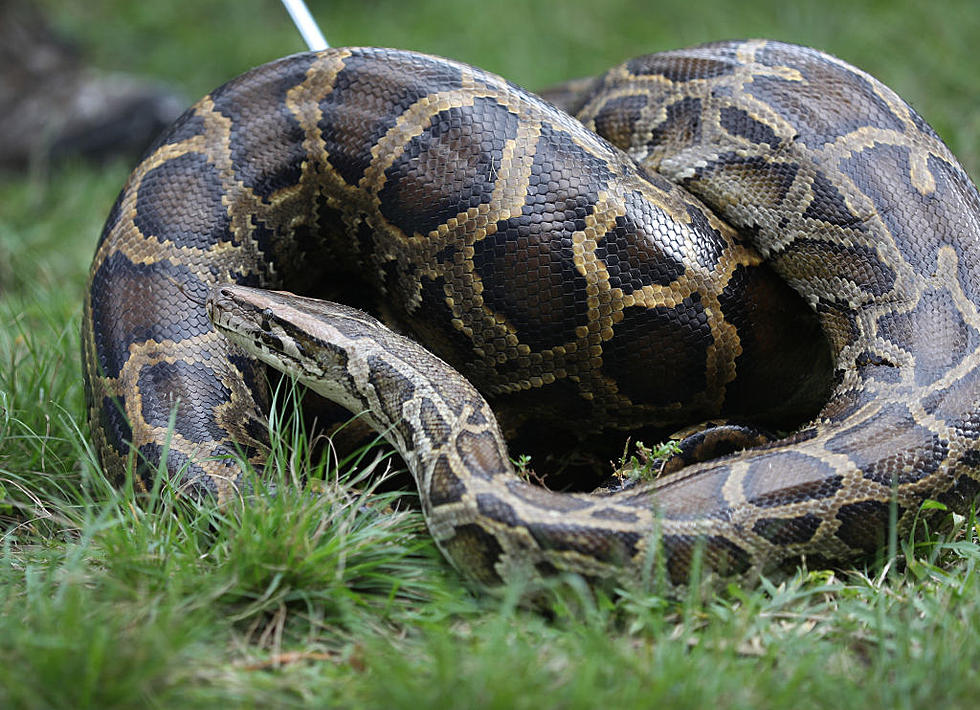
Big Burmese Pythons Heading North…Will They Invade Massachusetts?
Massachusetts is no stranger to having snakes slithering around throughout the state. You may remember from a previous article that there are 14 species of snakes in the Quabbin Reservoir which goes without saying that the body of water is the most snake-infested lake in Massachusetts. Good thing you can't swim in the reservoir but even if you could you wouldn't find me there.

Of The 14 Snake Species in Massachusetts, There are Only Two That Venemous
Even though Massachusetts has a healthy helping of snakes there are only two types that are venomous which are the Eastern Copperhead and the Timber Rattlesnake. The Eastern Copperhead is limited mainly to small, localized populations in Norfolk and Hampden counties while the Timber Rattlesnake is limited almost exclusively to the Western counties of Massachusetts. According to mass.gov, both of these snakes live only in a few areas and both are endangered so you probably don't have to worry too much about bumping into either type of snake.
Burmese Python Populations are Getting Out of Control Down South
In a recent article published by WINK it stated that hunters recently wrapped up rangling Burmese pythons as part of the Florida Python Challenge. It's important for hunters to remove and humanely euthanize these snakes in the Sunshine State because Burmese Pythons are invasive to the area and they are eliminating a chunk of mammals including rabbits, raccoons, and possums from areas of the Everglades which is posing a threat to the ecosystem. As the population of Burmese Python has increased from 100 to 300,000, Florida has quite an issue on its hands.
Burmese Pythons are Heading North but Will They Invade Massachusetts?
The article also noted that Burmese Pythons are migrating north and have been doing so for the past 40 years. However, if you live in Massachusetts you can relax as the article mentioned that some climate models suggest that the pythons have already reached the area where they will stop and other climate models suggest that the pythons could reach as far north as Washington D.C. You can read more about the Burmese Pyhtons' migration north by going here.
LOOK: Here are the pets banned in each state
LOOK: 11 tick-borne illnesses and what to watch out for during your outdoor adventures
LOOK: 20 of the biggest insects in the world
More From WUPE









